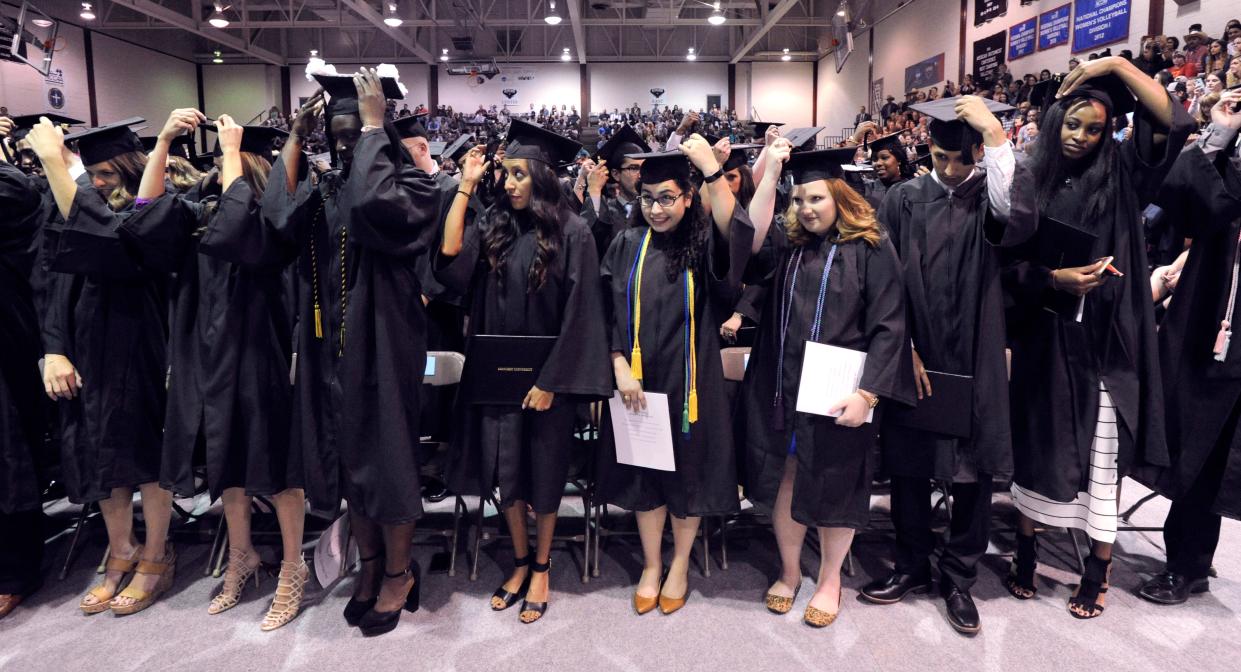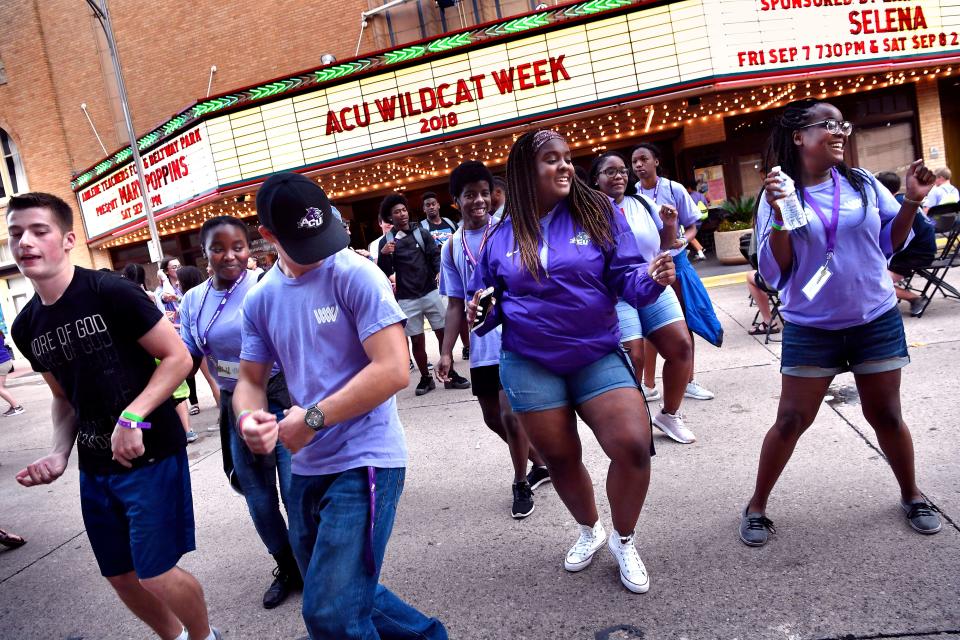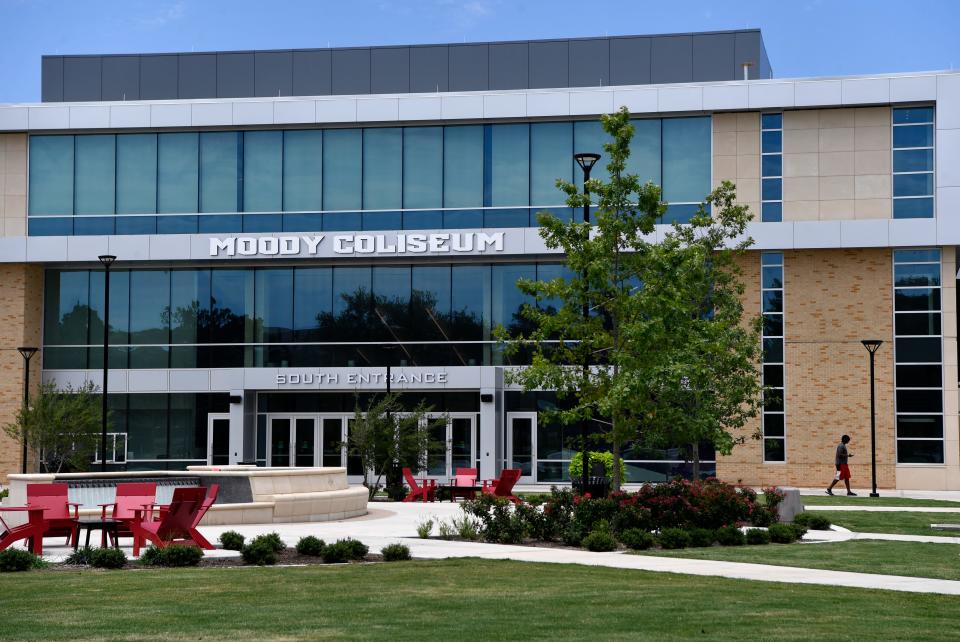No quotas: Abilene universities have still become more diverse

- Oops!Something went wrong.Please try again later.
The U.S. Supreme Court decision to strike affirmative action set off the expected chorus of reaction - support and protest.
And some confusion.
The focus was on colleges.
The court in a 6-3 vote struck down the affirmative action program at the University of North Carolina and in a 6-2 vote, at Harvard. In summary, considering race in the admission process is a violation of the Equal Protection Clause of the U.S. Constitution, the court ruled. Thus, affirmative action programs are unlawful.
Wrote Chief Justice John Roberts for the majority, "The student must be treated based on his or her experiences as an individual, not on the basis of race."
The decisions reversed a ruling 20 years ago that said race could be considered a factor in admissions, to get past discrimination.
More: Hardin-Simmons acceptance rate is up; goal now is student success
More: McMurry has gained Hispanic serving status, cut student expenses
First, what is affirmative action?
Encyclopedia Britannica defines affirmative action in the United States as "the active effort to improve employment, educational and other opportunities for members of groups that have been subjected to discrimination. Criteria for affirmative action include race, disability, gender identity, sexual orientation, ethnic origin and age."
Those cheering the ruling say it will make considerations more "colorblind." It was a word Justice Clarence Thomas used in his opinion.

Opponents say its a big step backward in fixing discrimination. Justice Sonia Sotomayor, said the ruling "stands in the way and rolls back decades of precedent and momentous progress."
In Abilene, home of three private four-year colleges, the ruling has little if any effect. Abilene Christian, Hardin-Simmons and McMurry have not used race consideration to enroll students, representatives at each institution say.
"The ruling does not affect us in any way," said Anthony Williams, who heads the office of Diversity, Equity and Inclusion at ACU. He doesn't believe it affects the other two colleges, either.
He offered that local campus demographics are changing anyway, and the result of intentional efforts over the years.
"We want to provide an opportunity that doors are open to all," Williams said.
Colleges are focusing on better ensuring that the collegiate experience is meaningful, and encouraging a student to stick with it through graduation. That includes making sure that a minority student feels welcome, is plugged in and is comfortable on campus, as well as helping with financial and emotions needs that many students face.
College costs a lot of money, even with scholarships. While Abilene college representatives believe a college education will make a difference in future employment, they also realize that debt may negate that aspiration. The cost could force a student to drop out or spend years getting out of debt.
All believe the student experience at their respective campus has improved greatly. ACU, HSU and McMurry were historically white campuses until Black students were accepted 60 or so years ago. Today's demographics reflect change.
Hardin-Simmons, in fact, showed its student population largely mirrored that of Abilene at roughly 55% white, 25% Hispanic and 10% Black.
White students at McMurry are a minority (44%) when Hispanic (34%) and Black students (17%) are combined.
ACU's main campus is 64% white, 18% Hispanic and 7% Black. Including its Dallas campus, ACU is 59% white, 21% Hispanic and 7% Black.
Abilene Christian over 10 years has shown a 196% increase in students of color, Williams noted.
All three also note that religious affiliations have changed.
ACU now is 29% Church of Christ
Hardin-Simmons now is 34% Baptist
McMurry now is 6% Methodist.
The Reporter-News talked to representatives of each university - Williams at ACU, Travis Seekins at HSU and Matt Draud at McMurry. Here is how they assess diversity efforts at their schools.
ACU: Door open for students; now, the goal is to graduate them

Williams, a 27-year employee and administrator at ACU but a McMurry graduate, heads the office of Diversity, Equity and Inclusion. HSU and McMurry do not have DEI offices.
"ACU never has used quotas in regards to our recruiting," he said.
Now that ACU is a Division I university, it most often compares itself to other Division I schools - sometimes to church-affiliated institutions and at others times a wider group.
Williams said statistics show that ACU has outperformed Baylor, SMU and Baylor in recruiting "Black and brown students per capita. Where we haven't been as successful as we want to be or need to be is retaining those students."
That is measured twice: freshman to sophomore years, then through graduation.
That is a primary goal at the other two Abilene campuses.
"We have been putting programs in place for higher success for those students," Williams said.
This isn't just about enrolling Black students. Texas now is 40% Hispanic. ACU should reflect that, Williams said.
Combining the Abilene main campus and that in Dallas, ACU students are 22% Hispanic. The number drops to 18% on The Hill here.
Williams said that compares closely to Baylor and SMU, "but we want to be better."

ACU would like to become known as a Hispanic Serving Institution. To do that, its student body must be at least 25% Hispanic. McMurry is at 34% and recognized as an HSI; Hardin-Simmons last semester surpassed the minimum.
To achieve that goal at ACU and attract students of varied ethnicities, "we want to create a welcoming environment, an environment that allows all students to flourish while recognizing we have diversity among our students," Williams said.
Economics is a factor, and that covers a broader group.
ACU is targeting Pell Grant students - the most needy students who are eligible for financial aid, Williams said. That crosses ethnic categories. Williams said 40% of these students are white, 34% Hispanic and 26% Black.
The university excluded athletes, whose retaining rate is above 80%, or students involved in its LYNAY (Loving Your Neighbor As Yourself) program, which has a high retaining rate.
Resources included scholarship and mentoring. Many Pell students are first-generation students.
"We want to provide people around them who have been there and done that to help them navigate that first year," Williams said. "For our campus, we deemed those as the most at-risk."

Those students were identified this past spring and will receive financial help during the 2023-24 academic year through this pilot program. A review will follow to see what difference that made.
ACU's faculty now is 16% diverse, and women comprise 40%. Again, Williams said, there were no quotas set but Abilene Christian has succeeded "by communicating our aspirational goals."
Is ACU a place that a man or woman would want to work?
An example of that is the recent hiring of Ijeoma Moronu Alstrup as head volleyball coach. She is the first non-white women's head coach at ACU.
Another ACU strategy is to bring successful minorities to campus - Black enterprise leader Bobby Griffin of Stamford, former ACU and NFL football standout Cle Montgomery and ABC News correspondent John Quinones, for example. They tell their stories of coming from humble backgrounds to become nationally successful. More of these talks are planned.
More: Centerstage with: Caleb Evans, of ACU's 'Joseph and the Amazing Technicolor Dreamcoat'
Williams said efforts to be diverse are smart business for universities. The U.S. Department of Labor reported that 78% of new hires through 2030 will be Hispanic. ACU leadership, Williams said, believes the student population should reflect the region.
"Absent of quotas, we do have certain targets," Williams said.
He said finances and "a sense of belonging" are the two greatest challenges to students. Not just at ACU, but elsewhere.

That is why the DEI office was created.
"To see those students through to graduation," Williams said. "Everything else is centered on that."
That is the overall goal for all ACU students, but obstacles for some students must be recognized and addressed, or they become former students.
Williams said he has seen great change at ACU from when he started work there. Even with diversity changing the color of the campus and more students enrolling who are not Church of Christ, "ACU has not run away from its heritage. I would argue that ACU has run toward its heritage.
"The good Lord doesn't discriminate," he said. "I think that man can get in the way."
This article originally appeared on Abilene Reporter-News: No quotas: Abilene universities have still become more diverse

